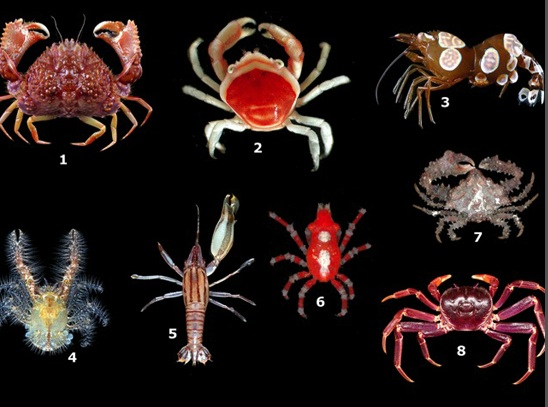Who doesn’t love whales, beautiful fishes, octopuses, corals — even sharks? You know that we do here at SeaMonster. But those charismatic megafauna, as they are rather cumbersomely known in the conservation science-geek community, are only the tip of the biodiversity iceberg. Down in the jumbled rubble on the floor of the reef, among the seaweeds and coral sand and what not, is a whole undiscovered, fabulously diverse world of small but often exquisitely beautiful spineless creatures rooting around eating detritus and each other, tunneling through the reef’s murky recesses, leading their secret lives.
A new paper by Laetitia Plaisance and colleagues aimed to get a handle on how many types of such critters there are. The task is overwhelming so to start with a manageable bite, they focused on crustaceans, surveying the little crabs and shrimps and their ilk from small dead coral heads on several reefs throughout the tropical Pacific. What they found:
* Lots o’ species: 525 species from a combined area (all samples together) of only 6.3 square meters.
* Most of them rare: high prevalence of rare species — 38% were encountered only once!
* High endemism: low level of spatial overlap — 81% were found in only one locality!
And we haven’t even touched on the various worms, sponges, tunicates, bryozoans, and so forth. Not to mention bacteria and algae. The picture is clear — and one we’ve known about for some time. But it’s brought into especially clear relief by this painstaking survey using standardized methods across a wide area. Bottom line: We’ve only scratched the surface in discovering the diversity of ocean life, and we may be losing it as fast as we can catch up with describing it. See the commentary and photos in Discovery News, and the original (open source) article here:

Leave a Reply